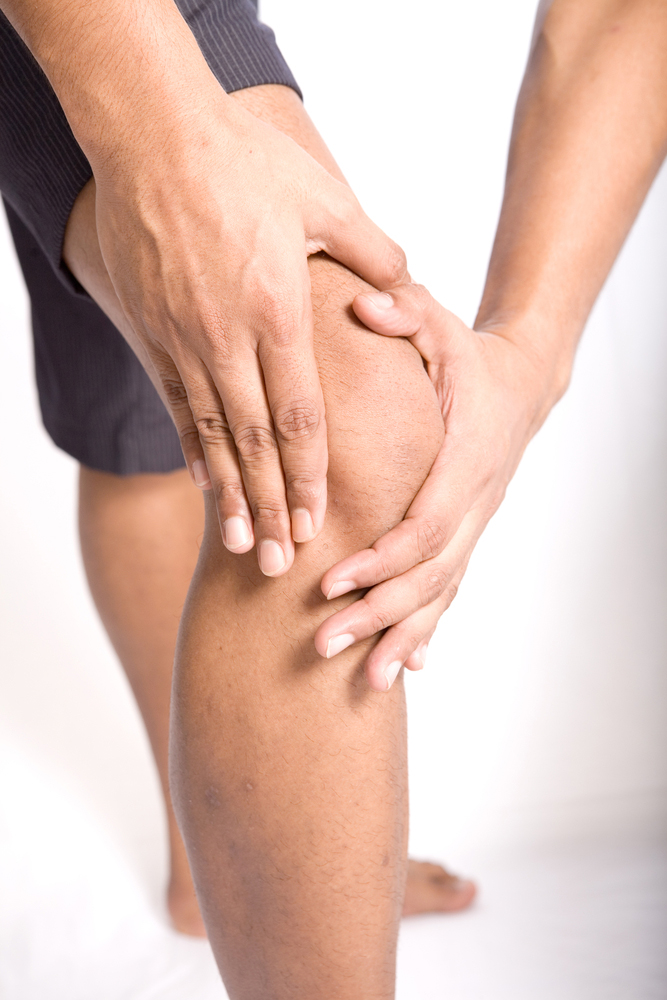Two of the most common joint-related diseases include Osteoporosis and Arthritis. While these two are very common, they attack the joints in different ways and each has its own risks and symptoms. The NIH Osteoporosis and Related Bone Diseases National Resource Center provides a more detailed explanation of both of these conditions. They explain Osteoporosis as a condition where bone-density decreases and increases the risk of fracturing. There are around 53 million people within the United States with diagnosed Osteoporosis or, at least, at high risk due to a low bone-density in their body. They explain Arthritis as a general term that medical professionals use for various conditions that affect the tissue around joints, as well as the joints directly. The two most popular types of Arthritis include Osteoarthritis and Rheumatoid arthritis.
Arthritis is also known to cause several disabilities when it comes to normal daily activities. Patients with arthritis have reported difficulty grasping small objects, sitting for more than 2 hours, carry objects that weighs more than 10 pounds, stand on their feet for more than 2 hours and even difficulty when trying to bend or kneel. Around 9.8% of American citizens have reported that they suffer from Arthritis and have activity limitations due to the condition, as recorded by Centers for Disease Control and Prevention.
Treatments For Joint Problems
There are numerous types of treatments available for joint problems. Joint problems do not necessarily mean a joint-related disease such as Osteoporosis or Arthritis. Many people who suffer from joint pain, stiffness and a decrease in flexibility within their joints does not have any of these diseases, but are at risk of developing such a disease should the problems be ignored.
NHS declares several symptoms that are commonly associated with Arthritis conditions. Should patients experience these symptoms, they are advised to seek a professional diagnosis from their doctor. Treatment in order to avoid further development of these problems are also highly recommended. Some of the most common conditions of Arthritis include pain and tenderness in joints, joint stiffness, joint inflammation, limited flexibility of joints, warm and red skin around joint areas and weakness.
With Rheumatoid arthritis being one of the most commonly diagnosed forms of arthritis, WebMD recommends several treatment options that can be used to prevent further damage from occurring, to minimize the effects of the disease and to treat the damage already done. Popular treatments include prescription medication, rest, physical exercise, arthritis aids, stress management, consuming foods that are known to reduce inflammation, avoiding foods that are known to cause inflammation, going for physical therapy, frequent visits to your doctor for checkups and also surgery should the condition be severe.
Permanently Increase Joint Functionality
While medicated treatments, regular exercise and several other tips are recommended to treat problems such as arthritis, many of these treatments will only have immediate affects without providing a longer lasting benefit. There are, however, several alternative options available for individuals suffering from joint conditions that involves pain, inflammation, stiffness and movement limitations. When looking at these alternative options, several additional long-term benefits can usually be expected that would help reduce the risk of damaging joints further, while also improving the condition joints are in when consuming these alternative options.
Flexoplex is one of the best alternatives on the market at the moment. The solution is a scientifically formulated substance that provides several benefits to any individual suffering from joint issues, whether they have been diagnosed with a joint disease or are simply experiencing symptoms that might put them at risk of developing such a disease. The supplement provides numerous benefits, including:
- Assists with rebuilding and repairing damaged joints
- Assists with joint stiffness by properly lubricating joints
- Assists with pain management
- Assists with reducing inflammation in and around affected joint areas
- Assists with improving joint flexibility in order to provide an improved range of motion
- Assists with enhancing joint mobility
The supplement has been formulated by medical professionals and only include potent ingredients that have been researched and proven to provide effective support for joints, including joint related diseases. The formula contains a wide variety of natural ingredients that assists the body with repairing damage and improving the overall condition of the joints. Some of the most vital ingredients include Rutin, which reduces inflammation, Cat’s Claw bark, which soothes away pain, and Hyaluronic acid to improve joint movement. A combination of Glucosamine sulfate and Chondroitin sulfate also provides an effective repair element that gets to work by rebuilding bones that have been damaged and worn out. Added MSM also provides effected relieve of discomfort and muscle aches associated with osteoarthritis.
Conclusion
Considering the many options available for joint-related conditions, patients should always ensure they weigh all their options. While many of the medication that can be obtained from a doctor provides effective relieve of the symptoms associated with arthritis and other related diseases, many of them also come with several risks and only a few assists with repairing the damage that has already been done. Taking a supplement such as Flexoplex can provide a patient with more benefits due to the permanent improvement in joint flexibility, mobility and functionality.
Author Bio:
Annie Lizstan works as a health and beauty consultant for online websites and an independent researcher by profession. She had completed her studies from university of Arizona and live in Wasilla, Alaska. She always like to explore her ideas about health, fitness and beauty . In her recent period ,she got an opportunity to explore on under eye bags .She has experience researching as a passion as well as profession. You can also connect with her on Facebook, Twitter and Pinterest.




